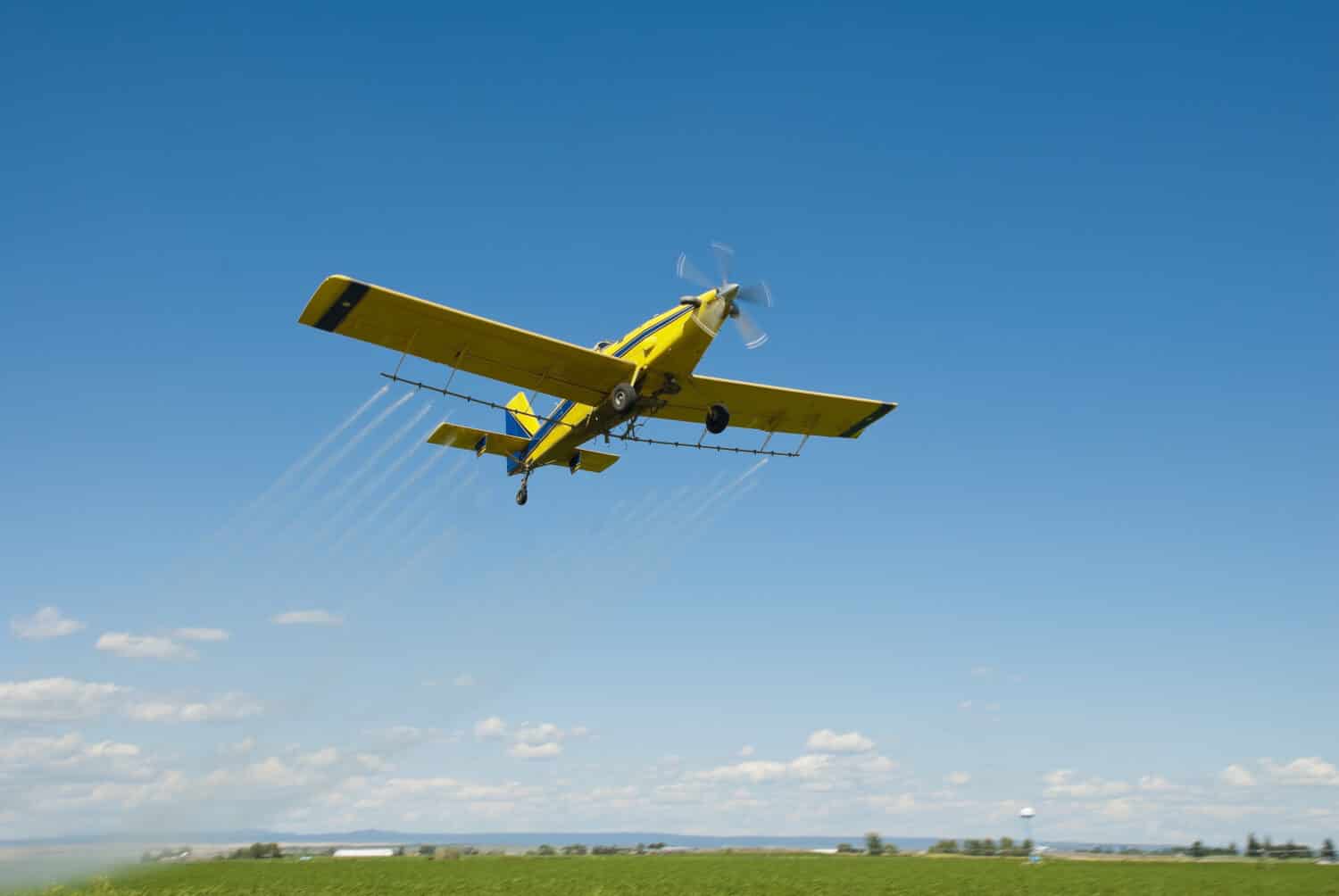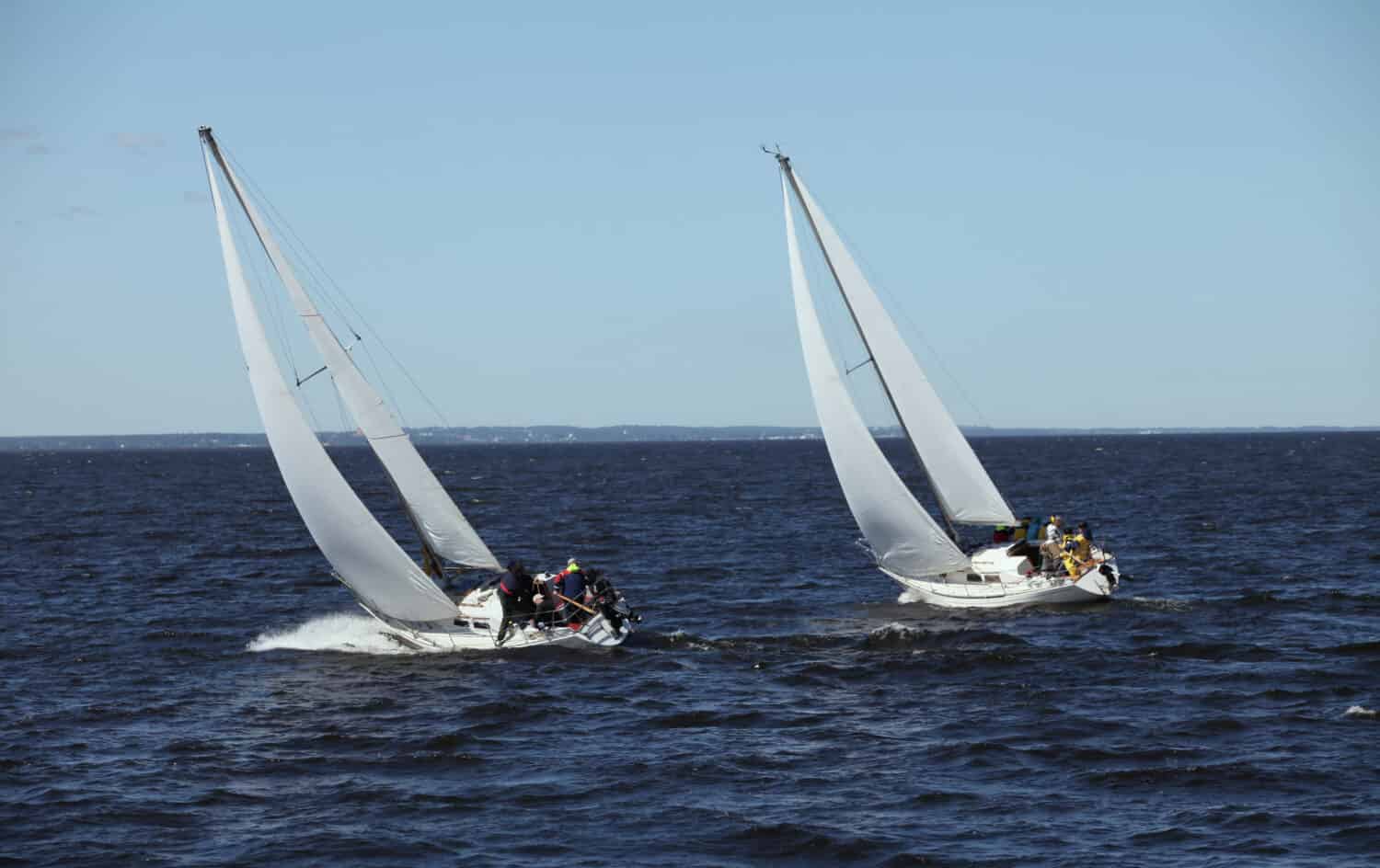Headwinds vs. tailwinds – what are they? Picture yourself riding a bicycle, effortlessly gliding downhill. Then, the terrain shifts, forcing you to pedal harder uphill. This scenario mirrors headwinds and tailwinds’ effects on various activities (e.g., cycling, aviation, sailing, and business). Understanding their differences is vital, as they significantly influence takeoff distances.
In aviation, for instance, a 10% headwind shortens the takeoff distance by around 19%, while a whopping 50% headwind cuts it by 75%. Conversely, a 10% tailwind extends the distance by 21%.
Headwinds push against you, making it tough to move forward. On the flip side, tailwinds propel you from behind, boosting and easing your journey. Now that we’ve grasped the basics, let’s uncover their effects on different activities.
Cyclists, pilots, sailors, and entrepreneurs face unique experiences with head and tailwinds. So, get ready to embark on a whirlwind adventure as we explore the ins and outs of these dynamic forces.
Headwinds
Headwinds are winds blowing in the opposite direction of travel. They make forward movement harder, requiring extra effort and energy to overcome their force. Headwinds can impact various activities like cycling, aviation, and sailing.
Factors that cause headwinds:
- Weather patterns, such as high and low-pressure systems
- Topography, including mountains and valleys
- Urban landscapes, with tall buildings creating wind tunnels
Effect of headwind on different activities:
Cycling
- Increased effort and energy expenditure to maintain speed
- Reduced overall speed, leading to longer travel times
- Potential instability, especially during strong gusts
Aviation
- Longer takeoff and landing distances due to reduced airspeed
- Increased fuel consumption to maintain altitude and speed
- Potential turbulence and discomfort for passengers
Sailing
- Slow progress against the wind, requiring tacking maneuvers
- Increased difficulty controlling the sailboat, especially for inexperienced sailors
- Greater risk of capsizing in strong headwinds and rough seas
Business
- Increased operating costs, such as higher fuel expenses for transportation
- Slow delivery times, impacting customer satisfaction and supply chain efficiency
- Potential disruptions to operations due to adverse weather conditions
- Increased need for contingency planning and risk management strategies
- Possible fluctuations in demand for products and services affected by headwinds, such as seasonal variations in tourism and outdoor activities

Headwinds are winds blowing in the opposite direction of travel.
©photoschmidt/Shutterstock.com
Tailwinds
Tailwinds are winds that blow in the same direction as an object’s motion, boosting it. They can significantly impact various activities, from sports to business, by adding momentum and speed.
Factors that cause Tailwinds:
- Global wind patterns
- Local weather systems
- Terrain features
Effect of tailwinds on different activities:
- Cycling: Tailwinds can make cycling more enjoyable and efficient. They help cyclists reach higher speeds with less effort, reducing fatigue and increasing overall performance.
- Aviation: Tailwinds reduce fuel consumption and flight duration. Pilots often plan their routes to take advantage of these favorable winds, allowing smoother flights and lower operating costs.
- Sailing: Sailors harness tailwinds to propel their vessels faster and more efficiently across the water. By adjusting sails and course, sailors can make the most of these winds to reach their destination faster.
- Business: The term “tailwind” is used metaphorically to describe factors that propel a company forward. These factors may include positive market trends, technological advancements, or favorable government policies. Companies benefit from such tailwinds by experiencing increased growth and profitability.

Tailwinds are winds that blow in the same direction as an object’s motion, boosting it.
©Roman Samborskyi/Shutterstock.com
When is a Headwind Beneficial?
A headwind is advantageous during takeoffs and landings. Why? Because airfoils generate greater lift when moving into headwinds, compared to calm wind or equal-speed tailwinds.
Indeed, pilots and air traffic controllers favor runways with headwinds for departures and arrivals. This preference enhances flight safety and efficiency.
Similarly, aircraft carriers harness headwinds. They turn towards them when planes take off or land, providing an ideal environment for these critical maneuvers.
In sports, cyclists strategically use headwinds to their advantage. Riders break away from the pack, forcing competitors to battle the headwind alone, which drains their energy. This tactic allows the leading cyclist to maintain their position easier.
When is a Tailwind Beneficial?
Tailwinds benefit planes during cruising. They cut fuel usage and boost speed, allowing faster, more economical trips. In short, tailwinds save time and money.
For cyclists and runners, tailwinds also help. They help athletes maintain a quicker pace with less effort. As a result, racers conserve energy and enhance performance.
In sailing, tailwinds are also valuable. They push boats forward, easing navigation through the waters. Consequently, vessels reach destinations more efficiently.
Furthermore, tailwinds reduce transportation’s environmental impact. Lower fuel consumption leads to decreased carbon emissions.

Tailwinds benefit planes during cruising allowing them to cut fuel usage and boost speed.
©Denton Rumsey/Shutterstock.com
When is a Headwind vs. Tailwind Detrimental?
A headwind can be harmful during a plane’s cruise. It raises drag, leading to longer flight times. Tailwinds pose problems during takeoffs and landings.
Tailwinds reduce a plane’s climb gradient, affecting the altitude-to-distance ratio. As a result, planes reach desired altitudes later than anticipated. This issue impacts both landings and leveling off during flights.
Moreover, pilots require extra runway space for tailwind takeoffs. Hence, they prefer taking off without tailwinds. Both headwinds vs. tailwinds can be detrimental, depending on the flight phase.
How to Calculate Headwinds and Tailwinds
Pilots face two types of winds when flying: headwinds (opposite direction) and tailwinds (same direction).
To measure their effect on the aircraft, we use a straightforward formula:
Headwind/Tailwind Speed = Wind Speed * cos(α)
In this equation, α represents the wind’s angle from the plane’s direction. To find α, subtract the plane’s heading from the wind’s heading.
α = Wind Heading – Plane Heading
A practical example would be to imagine the wind speed is 10 knots at a 140-degree angle and the plane’s heading is 110 degrees. To find α, subtract 110 from 140.
α = 140 – 110 = 30
Now, plug the values into the formula to calculate the headwind.
Headwind = 10 * cos(30)
The result is 8.66. So, the headwind in this scenario is 8.66 knots.
Remember, understanding headwinds and tailwinds is crucial for efficient flight planning. Use these simple steps to calculate them accurately and ensure a safe journey.
How to Identify Headwinds and Tailwinds in Business
In business, it’s crucial to identify the forces working for or against your success. These forces are often called headwinds vs. tailwinds. Understanding them can help you make smarter decisions and navigate challenges more effectively.
Headwinds hinder your progress. They can include economic downturns, increased competition, or regulatory changes. To identify headwinds, stay informed about industry trends and news. Regularly analyze your competitors’ strengths and weaknesses.
Tailwinds, on the other hand, propel your business forward. Examples include technological advancements, favorable market conditions, or a growing customer base. To spot tailwinds, monitor customer feedback and industry reports. Keep an eye on emerging opportunities in your sector.
When analyzing headwinds vs. tailwinds, it’s essential to maintain a balanced perspective. Don’t focus solely on the negatives or the positives. Instead, weigh both sides and make strategic adjustments accordingly.
Consider diversifying your product offerings or exploring new markets to adapt to headwinds. Collaborate with partners to strengthen your position. For tailwinds, capitalize on the momentum by investing in growth initiatives, such as marketing campaigns or product development.

Windsocks and wind tetrahedrons can help you identify wind direction and strength.
©Drepicter/Shutterstock.com
How to Identify Headwinds and Tailwinds in Cycling, Aviation, Sailing
Headwinds and tailwinds play a crucial role in cycling, aviation, and sailing. Recognizing them optimizes performance and efficiency. Here’s how to identify headwinds vs. tailwinds effectively:
1. Cycling
- Pay attention to the wind direction. Feel the breeze on your face or use a flag to determine its course. If it’s blowing against you, it’s a headwind; pushing you from behind is a tailwind.
- Adjust your riding position to reduce air resistance. When facing a headwind, lean forward and tuck in. With a tailwind, maintain an upright position to maximize the push.
- Work with other cyclists. Take turns leading into the wind and drafting behind one another. Teamwork will help you conserve energy and maintain speed.
2. Aviation
- Check weather reports before your flight. Look for information on wind direction and speed at different altitudes. Plan your route accordingly to avoid headwinds and utilize tailwinds.
- Monitor your ground and airspeed. A significant difference between the two indicates the presence of headwinds or tailwinds. Adjust your flight path to optimize efficiency.
- Use wind indicators at airports. Windsocks and wind tetrahedrons can help you identify wind direction and strength. Use this information to plan your takeoff and landing strategy.
3. Sailing
- Observe the water’s surface. Ripples and waves indicate wind direction. Headwinds come from the direction you’re sailing toward, while tailwinds push you from behind.
- Adjust your sails to harness the wind. For headwinds, trim your sails close to the centerline. With tailwinds, let them out to catch as much wind as possible.
- Use telltales on your sails. These small pieces of yarn or ribbon show the wind’s direction relative to your sail. Adjust your sail trim to ensure smooth airflow and optimal performance.

When sailing adjust your sails to harness the wind.
©mrivserg/Shutterstock.com
What is Better, Headwind or Tailwind?
As seen from what we discussed above, tailwinds are the most preferred. There are, however, exceptions to this rule.
Tailwinds increase plane speed and fuel efficiency. Headwinds prove advantageous during takeoff. With a headwind, aircraft generate more lift, allowing for faster takeoffs and shorter distances. Headwinds also reduce landing runway length and lower landing speeds.
In business, headwinds often represent challenges or obstacles that hinder growth. For instance, economic downturns, increased competition, or regulatory changes can all be considered headwinds.
On the other hand, tailwinds symbolize favorable conditions that propel a business forward. Examples include technological advancements, emerging markets, or positive industry trends.
While headwinds may seem unfavorable, they can also lead to innovation and adaptation. By overcoming these challenges, companies can emerge stronger and more resilient.
Strategies for Dealing with Headwinds and Tailwinds
Navigating through headwinds and tailwinds requires skillful strategies. Let’s explore the tactics used in cycling, aviation, and business to conquer these challenges.
1. Cycling
- Adjusting body position and bike setup
Take advantage of headwinds by lowering your body position. A more aerodynamic posture reduces air resistance. Adjust your bike setup to enhance efficiency and comfort.
- Pacing and energy management
Maintain a steady pace when facing headwinds. Preserve energy for the entire ride. Tailwinds allow you to maximize speed without overexerting yourself.
Riding with a group or drafting
- Drafting behind others saves energy. Riding in a group helps share the workload. Rotate positions to benefit from both headwinds and tailwinds.

Riding in a group helps share the workload. Rotate positions to benefit from both headwinds and tailwinds.
©Digital Vision./DigitalVision via Getty Images
2. Aviation
- Flight planning and route adjustments
Plan flights considering prevailing winds. Alter routes to avoid headwinds and capitalize on tailwinds. Efficient flight paths save time and fuel.
- Fuel management and consumption
Monitor fuel consumption during headwinds. Adjust altitude and speed to optimize efficiency. With tailwinds, maintain a balance between speed and fuel savings.
- Aircraft performance considerations
Understand aircraft limitations. Headwinds affect takeoff and landing performance. Tailwinds can boost travel speed but require careful management.
3. Business
- Adapting to market changes and trends
Stay alert to industry trends. Adapt your business to address headwinds. Embrace new opportunities created by shifting market dynamics.
- Strategic planning and risk management
Develop long-term strategies to navigate headwinds. Implement risk management practices to minimize adverse effects. Be prepared for unexpected challenges.
- Leveraging tailwind opportunities
Capitalize on favorable conditions. Tailwinds offer growth potential and competitive advantages. Seize these opportunities to propel your business forward.
Embrace the Winds: Mastering Headwinds vs. Tailwinds
To sum up, grasping the distinctions between headwinds and tailwinds is crucial for those involved in outdoor activities like cycling and flying and businesses striving to adapt to a dynamic economic environment. By identifying the unique features of each wind type, you can effectively equip yourself and your business to tackle the challenges they pose and capitalize on their impact on performance.
Whether you’re battling against formidable headwinds in the shape of market obstacles or reaping the benefits of a supportive tailwind as new opportunities emerge, embracing these natural forces will ultimately enable you to become more resilient and proficient in your endeavors.
The photo featured at the top of this post is © Kapustin Igor/Shutterstock.com
Thank you for reading! Have some feedback for us? Contact the AZ Animals editorial team.







